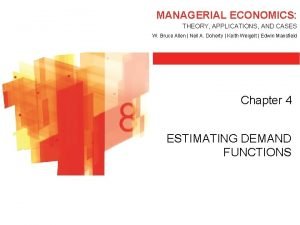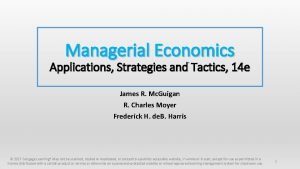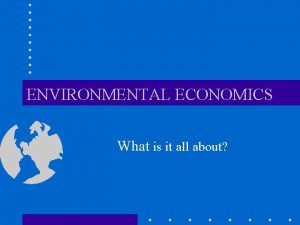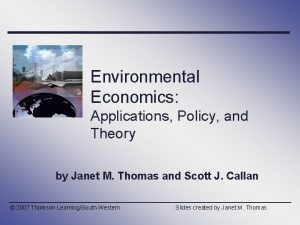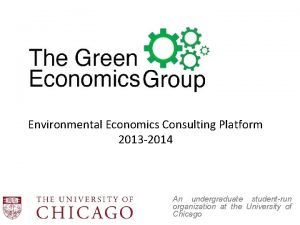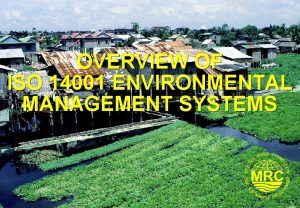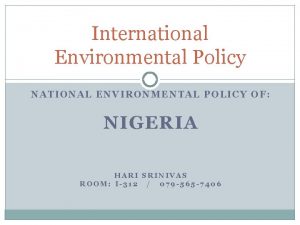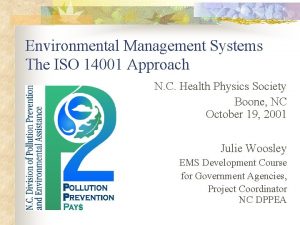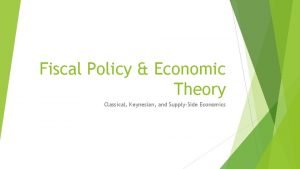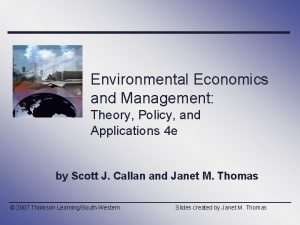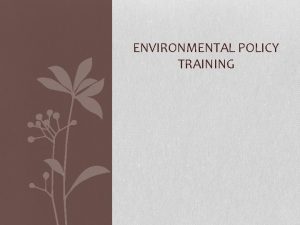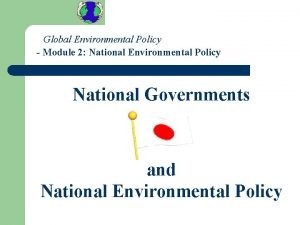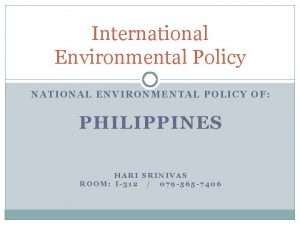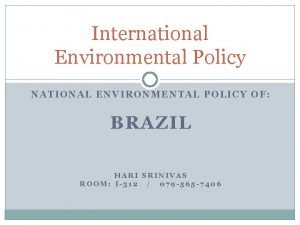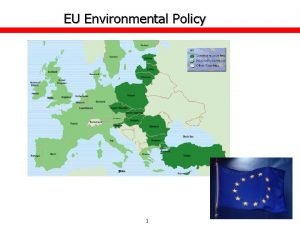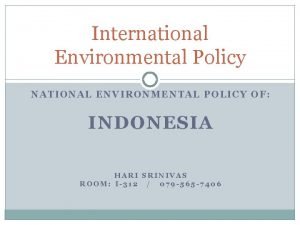Environmental Economics and Management Theory Policy and Applications
















- Slides: 16

Environmental Economics and Management: Theory, Policy, and Applications 3 e by Scott Callan and Janet Thomas © 2004 Thomson Learning/South-Western

Chapter 1 The Role of Economics in Environmental Management © 2004 Thomson Learning/South-Western

Economics and the Environment Economic theory explains what we observe in reality l Microeconomic analysis can also be used to analyze environmental problems l 3

Economics and the Environment l Circular Flow Model – the basis for modeling the relationship between economic activity and the environment ¡ ¡ l Real Flow Factor Market Output Market Money Flow Does not explicitly show the linkage between economic activity and the environment 4

Economics and the Environment Figure 1. 1 Circular Flow Model of Economic Activity 5

Economics and the Environment Figure 1. 2 Materials Balance Model: The Interdependence of Economic Activity and Nature 6

Economics and the Environment l Materials Balance Model – illustrates the relationship between economic activity and the environment ¡ ¡ Flow of Resources l Natural Resource Economics – concerned with flows of resources from nature to economic activity Flow of Residuals l Residuals – by-products released back into the environment l Assimilative Capacity – environmental ability to absorb residuals l Recovery Recycling and Reuse – methods to delay the flow of residuals 7

Economics and the Environment l Materials Balance Model ¡ Science and Materials Balance l First Law of Thermodynamics – matter and energy can neither be created nor destroyed l Second Law of Thermodynamics – nature’s capacity to convert matter and energy is not without bound 8

Fundamental Concepts in Environmental Economics l Causes of Environmental Damage: Types of Pollutants ¡ ¡ Natural Pollutants – nonartificial Anthropogenic Pollutants – human induced and include all residuals associated with consumption and production l Of greater concern to environmental economists 9

Fundamental Concepts in Environmental Economics l Sources of Pollution: Classifying Polluting Sources ¡ ¡ Source Grouped by Mobility l Stationary Sources – fixed site l Mobile Source – any non-stationary source Sources Grouped by Identifiability l Point source – single identifiable source l Nonpoint Source – a source that cannot be accurately identified 10

Fundamental Concepts in Environmental Economics l Identifying the Scope of Environmental Damage: Local, Regional, and Global Pollution ¡ Global Pollution – widespread environmental effects with global implications l Examples: • Global warming • Ozone depletion 11

Identifying Environmental Objectives Environmental Quality – reduction in anthropogenic contamination to socially acceptable levels l Sustainable Development – management of resources to ensure long-term quality and abundance l Biodiversity – the variety of distinct species, genetic variability, and variety of inhabitable ecosystems l 12

Environmental Policy Planning: An Overview Figure 1. 4 Parties Involved in Environmental Policy Planning 13

Environmental Policy Planning: An Overview National Environmental Policy Act l Risk Analysis l ¡ ¡ Risk Assessment – qualitative and quantitative evaluation of risk posed by an environmental hazard Risk Management – decision process of choosing from alternative responses to environmental risk 14

Environmental Policy Planning: An Overview l Policy Evaluation Criteria ¡ ¡ ¡ Allocative Efficiency – requires resources be appropriated such that benefits are equal to costs Cost-effectiveness – requires the least amount of resources be used to achieve an objective Environmental Quality – concerned with the fairness of the environmental risk burden across segments of society or geographic region 15

Environmental Policy Planning: An Overview l Government’s Overall Policy Approach ¡ ¡ l Command-control Approach – regulates polluters through the use of rules Market Approach – incentive policy that encourages conservation or pollution reduction l “Polluter-pays Principle” – polluter pays for the damage caused Setting the Time Horizon ¡ ¡ Management Strategies – a short-term strategy intended to manage an existing problem Pollution prevention – long-term strategy aimed at reducing the amount of toxicity of residuals released to nature 16
 Environmental science chapter 2
Environmental science chapter 2 Managerial economics: theory, applications, and cases
Managerial economics: theory, applications, and cases Managerial economics applications strategy and tactics
Managerial economics applications strategy and tactics Gmu environmental science and policy
Gmu environmental science and policy Maastricht university school of business and economics
Maastricht university school of business and economics Wireless health
Wireless health Externalities in environmental economics
Externalities in environmental economics Scope of environmental economics
Scope of environmental economics Scope of environmental economics
Scope of environmental economics Equimarginal principle
Equimarginal principle Environmental economics consulting
Environmental economics consulting Iso 14001 summary
Iso 14001 summary Environmental policy in nigeria
Environmental policy in nigeria Iso 14001 environmental policy statement examples
Iso 14001 environmental policy statement examples Non mathematical economics
Non mathematical economics Fiscal policy ib economics
Fiscal policy ib economics Classical economics vs keynesian
Classical economics vs keynesian

